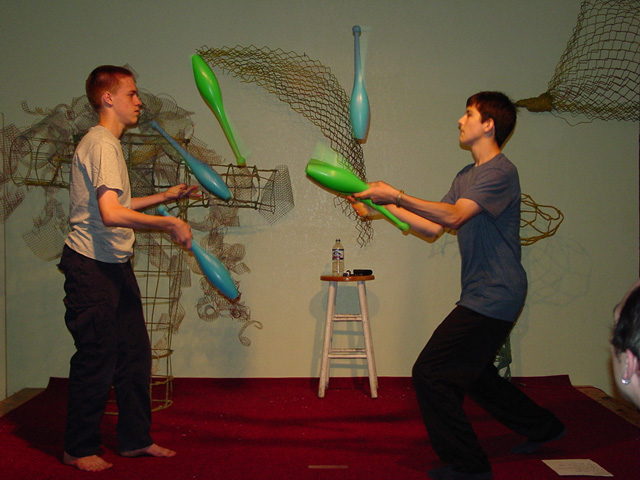
| Home | Publications | Classes | Consulting | My Lab |


| Research : | Areas |
![]()
For the last several years I have been carrying out research in three different but complementary areas:
Theory of Interaction
Environment Design
Information Architecture
Theory of Interaction
I have been exploring the basic question of how people adapt the environment
to simplify cognitive tasks -- how they create structure
in the world to complement the way they project structure,
and how they develop interactive cognitive strategies to reduce the mental
load they must support when performing a task.To study these issues I
have been:
a) Using and extending theoretical tools originally developed for other fields: amortized complexity from the theory of computational complexity, value of information from economics, case based reasoning from Artificial Intelligence, theory of action from philosophy of mind.
b) Introducing new theoretical concepts such as epistemic and complementary actions; and extending in new directions theoretical ideas about coordination first introduced by Ed Hutchins, Tom Malone, and others.
c) Designing a range of interactive experiments: studying how Tetris players both old and young acquire strategies as they improve, how people both old and young, re-organize lettered blocks, how they count coins, how they solve a block stacking problem, how they play scrabble, and how people cope with interruptions.
d) Observing the behavior of individual office workers, small teams of collaborators,and decision makers in command centers and business contexts. This represents a foray into ethnographic study, and I am working toward extending that method to natural but slightly more controlled contexts, semi-structured experiments.
Environment design
Based on these theoretical ideas and methods I have been trying to
develop new principles for environment and workplace design particularly
the design of smart rooms where there are many sensors and context aware
computation, and digitally enhanced collaborative environments. These
design principles blend virtual and physical elements to create new venues
for people to work with each other and new ways for them to work with
information (and computers). Some of these architectural studies have
been purely theoretical, as my basic inquiry into the ontology of adaptive
rooms, my theoretical paper on The
Context of Work, and the position papers I am finishing on Future
environments, and Context Aware Computing. Others, are based on my practical
experience in teaching my classes at a distance, on early research with
Jim Hollan and Ed Hutchins on annotation in workplaces, on an analysis
of the impact of interruption on work activity, and from my recent projects
studying distributed collaboration and augmented video. All focus on what
it means for a workplace to be well organized for workflow; on how agents
dynamically restructure their workspace to minimize cognitive effort;
and on how individuals and groups use coordinative structures to improve
their distributed cognition and help reduce their metacognitive burdens.
My output is in the form of research papers and participation in design
teams at the UCDC, the World Bank, The Global development Gateway, and
also the very substantial learning environments I have been building for
the last 5 years.
Information architecture
My third research area is information architecture, in particular the
design of large scale web systems. Information architecture is one of
the core elements of web design which I teach in my class on web design
(Cognitive Aspects
of Multimedia Design), and I have been fortunate in being the principle
architect for several large web sites: the World
Banks external site 1999 with over 100,000 pages, the World
Banks intranet with over 350,000 pages, and most recently the Global
Development Gateway (several 100s of thousands of pages), a site to
support economic development and knowledge sharing in the developing world.
I have had a long standing interest in information visualization and illustration.
But more recently, partly as a consequence of teaching my web design class
and my practical experience as an information architect for large scale
web systems, I have become even more interested in how media interact
to improve comprehension and navigation, and how we can design large information
spaces that are usable. My most recent article is a long piece on Metacognition,
Distributed Cognition and Visual Design, an essay on designing elearning
environments to improve metacognition.
[ top ]
